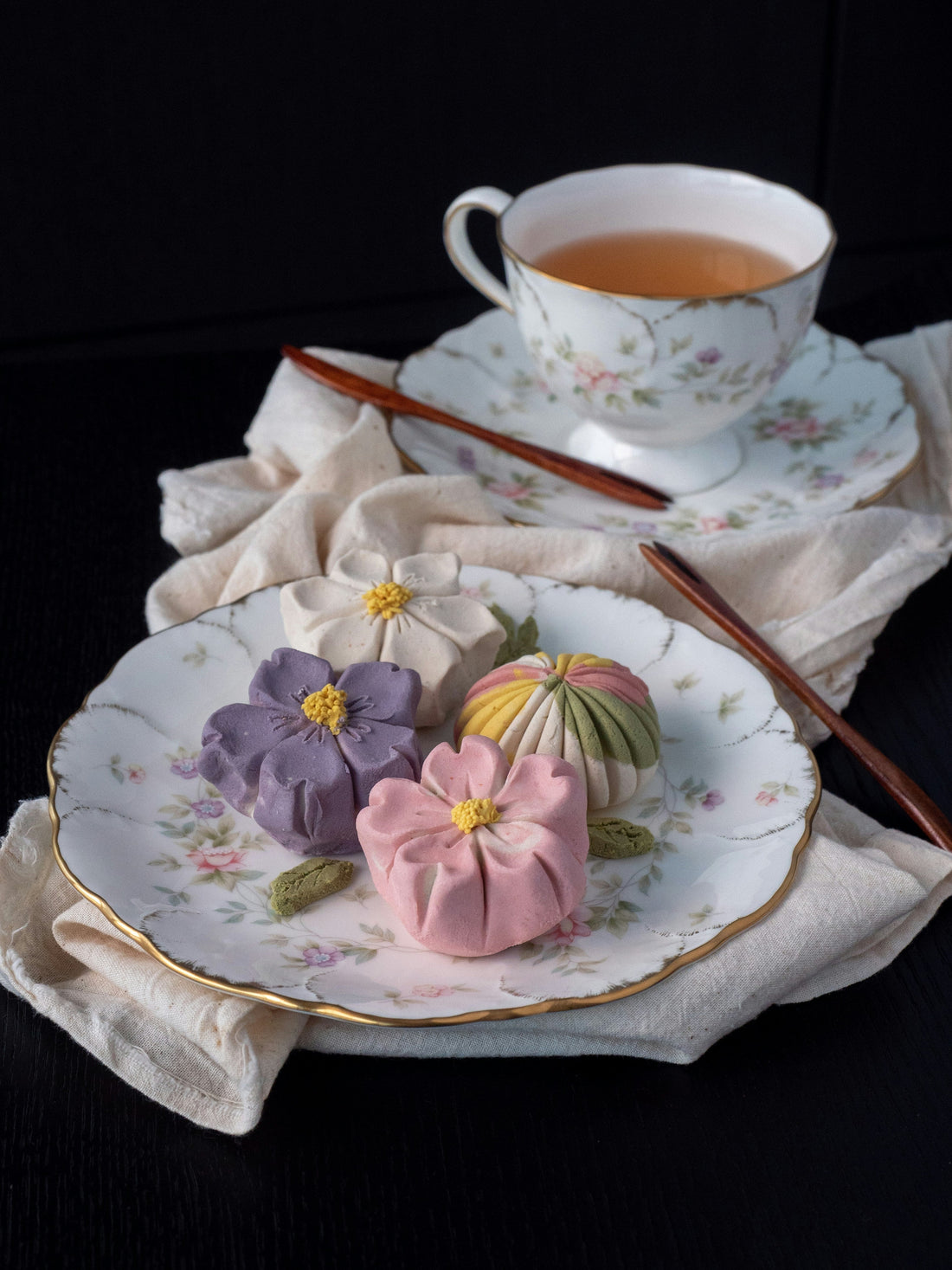Reading material
The History of Japanese Sweets: Japan's Sweet Culture Nurtured by the Four Seasons and Aesthetic Sense

The History of Japanese Sweets: Japan's Sweet Culture Nurtured by the Four Seasons and Aesthetic Sense
Wagashi are more than just sweet treats; they reflect Japan's four seasons, culture, and aesthetic sense. Closely linked to the tea ceremony, seasonal customs, and gift-giving culture, they have enriched the lives and hearts of the Japanese people. By tracing their history, we can learn how wagashi has evolved into its current form.
Ancient times—sweets originated from fruits and nuts
The oldest sweets in Japan are said to be fruits and nuts. Before sugar was introduced, the blessings of nature themselves were enjoyed as sweets. During the Nara period, fried sweets and dumplings called "karakudamono" (Chinese sweets) were introduced from the continent and began to be served as offerings at temples and eaten at banquets for the nobility. This can be said to be the prototype of Japanese sweets.
The Middle Ages: The Development of Tea Ceremony and Confectionery Culture
From the Kamakura to Muromachi periods, tea spread along with Zen Buddhism, and sweets became an essential part of the tea ceremony. Around this time, manju was introduced from China and developed into a uniquely Japanese treat. Furthermore, sugar imports increased during the Muromachi period, and the range of sweets expanded dramatically. While sugar was initially a luxury item, it gradually came to be used in making sweets among samurai and noble families, and the foundation of Japanese sweet culture was laid.
The Edo Period: The Arrival of the Golden Age of Japanese Sweets
In the Edo period, the distribution of sugar expanded, allowing common people to enjoy sweets. Along with the spread of the tea ceremony, "jo-namagashi" (high-quality fresh confections) that expressed the changing seasons were born, and artisanal techniques were refined. Many of the traditional Japanese sweets that are still popular today, such as yokan, monaka, senbei, and rakugan, were established during this period.
In addition, confectionery crafts became popular in Edo, and sweets became widely enjoyed by the common people at festivals and fairs. Confectionery went beyond being mere food and was elevated to artistic value.
Modern - Fusion with Western confectionery
After the Meiji period, as Western culture began to flow in, Western sweets became widespread, but Japanese sweets evolved in their own way. New sweets were born that incorporated the recipes for castella and biscuits, while traditional Japanese sweets continued to be passed down as an essential part of gift-giving and ceremonies. In the Showa period, the "department store basement culture" took hold, and Japanese sweets once again came into the spotlight as souvenirs and seasonal gifts.
Modern Times - New Possibilities for Japanese Sweets
In modern times, Japanese sweets have been gaining attention both at home and abroad as a symbol of Japanese culture. In addition to traditional nerikiri and yokan, modern Japanese sweets incorporating fruit and chocolate have also appeared, and are popular with the younger generation. Furthermore, there is an increase in health-conscious Japanese sweets such as vegan and gluten-free options, and they continue to evolve to suit different lifestyles.
Pairings with coffee and tea are also becoming more popular. New ways of enjoying matcha are emerging, such as pairing dark roast coffee with yokan or light roast coffee with fruity Japanese sweets. Japanese sweets are now a part of Japanese culture that is loved across borders.
Japanese sweets reflect the Japanese aesthetic
The appeal of Japanese sweets lies not only in their taste but also in their appearance. The aesthetic sense of reflecting the changing seasons and natural scenery in a single small confection is a true expression of a uniquely Japanese sensibility. By expressing natural scenes such as cherry blossoms, autumn leaves, snow, and the moon, Japanese sweets have brought the seasons to people's hearts.
Learning about the history of Japanese sweets is also about coming into contact with the essence of Japanese culture. Japanese sweets have been passed down from the past to the present and will continue to evolve into the future. Each and every one of them embodies the lives and spirit of the Japanese people.
BONGEN COFFEE | OFFICIAL SITE
https://ginza-bongen.jp/